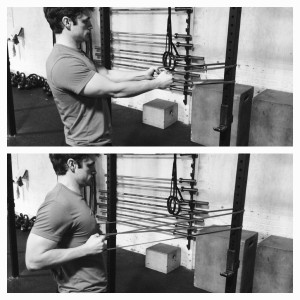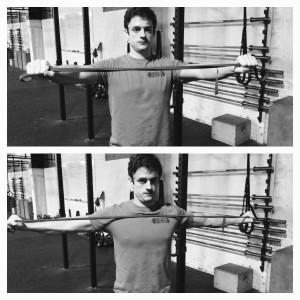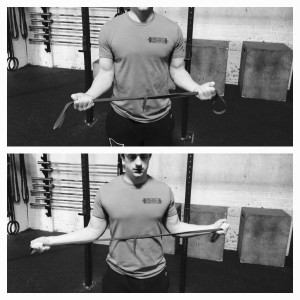One of the maxims we use teaching Movement and Mobility seminars is “If it’s not moving, get it moving.” It’s a classic Starrett-ism where you’re thinking “I don’t disagree, but I have no idea what you’re talking about.” Well basically it means even seemingly simple movements are complex symphonies where lots of seemingly inconsequential players make a tremendous impact on overall quality. The musculature of the upper back is one of those minor players with a big impact.
I get this question all the time: Hey Andrew, my shoulder has been hurting, what should I stretch to fix it? As always, my answer is, “well it depends.” One thing I see far too often though is just a gross imbalance in upper back strength. Specifically, the lower traps, rotator cuff and rhomboids. These muscles are small muscles with a big impact. I know elite powerlifters that spend more time working on their upper back than they do on their bench press. It’s really the foundation upon which all upper body movements are based.

Because we end up sitting down a lot, we weaken these small muscles by keeping them stretched all the time. Just like a rubberband kept stretched, eventually it loses its congruency and when called upon to perform it can be a recipe for disaster. While lax balling, banded distractions and manual therapies can be great; if we’re not fixing the strength deficits that got us to pain or weakness in the first place then we’re just going to end up at square one. Here are a couple great upper back exercises that you can do after your workouts to help everything from posture to pullups.
- Principles:
- – Anti-Shrug. Think about pulling your shoulders down away from your ears
- – Pinch the shoulder blades together. If every lower body movement starts by squeezing your butt, every upper body movement should start by pinching your shoulder blades
- – Hold the “top” of every movement and slowly return to the starting position
- – Perform sets of 20+ reps. These small muscles need lots of volume

Banded Row (above)

Banded Pull Apart (above)

Banded No-Money (above)
